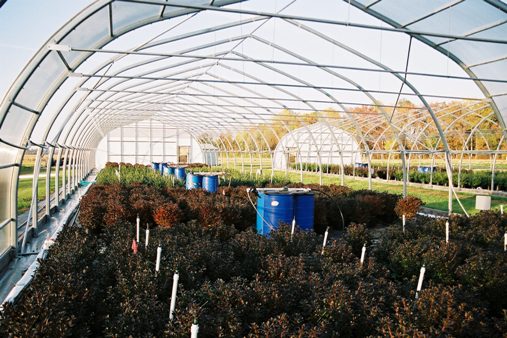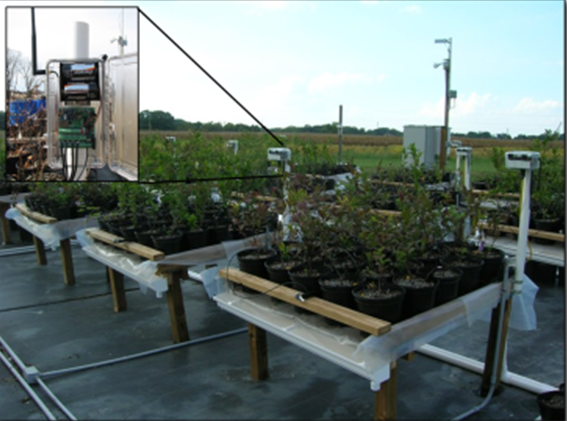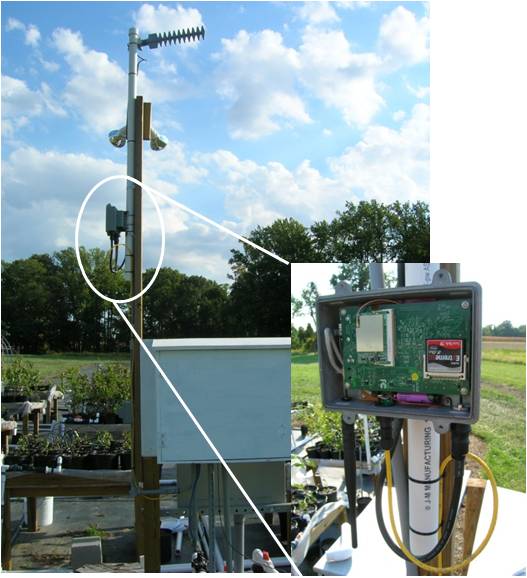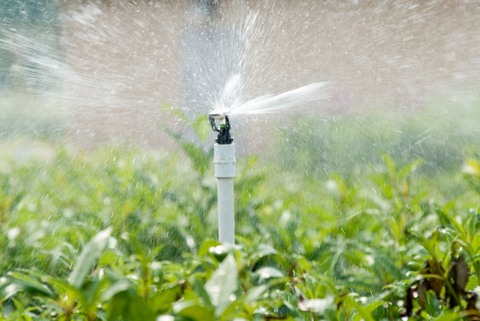You are here
Wye Research Site
 The Wye Research and Education Center is one of the University of Maryland's premier research stations, located on the eastern shore of Maryland, near Queenstown, MD.
The Wye Research and Education Center is one of the University of Maryland's premier research stations, located on the eastern shore of Maryland, near Queenstown, MD.
A container-nursery research site was established by Drs. Lea-Cox, Ross and Ristvey in 2000, specifically to research water and nutrient dynamics in container-nursery systems.
A number of publications have resulted from that research over the years, including early work on monitoring and controlling irrigation events using time domain reflectometry.
 Research Project:
Research Project:
The Wye sensor network was originally established in 2008 with Carnegie Mellon University nodes, to support a research project that quantified nitrogen (N) and phosphorus (P) runoff from 4 native plant species.
Twelve replicated platforms (Figure 6) compares sensor-controlled irrigation events (based upon a set-point of -10kPa in the pine substrate) vs. timed cyclic irrigation events that are scheduled with a programmable controller on 12 other platforms. Runoff from each platform is monitored using flow meters and collection barrels (not shown) on a continuous basis.
Watch a video demonstration of this sensor-driven irrigation capability, given by Dr. Ristvey. Please note that this RealPlayer file is approximately 5MB in size.
 Sensor Network Objectives: The primary objectives of this study are to precisely schedule irrigation events for the four species of plants, based on plant requirements. This is done using ECHO-10HS capacitance sensors which are inserted through the side of the container, about half-way up each of four containers, in each plot.
Sensor Network Objectives: The primary objectives of this study are to precisely schedule irrigation events for the four species of plants, based on plant requirements. This is done using ECHO-10HS capacitance sensors which are inserted through the side of the container, about half-way up each of four containers, in each plot.
Data are averaged on a continuous basis, and when the lower matric potential setpoint is reached, the solenoid is activated. When the containers reach container capacity, the sensors direct the solenoid to switch off.
This network is in a fairly remote location on the research farm, about 1 mile from the nearest building. Data is transmitted over that distance to an antenna located on a barn close to the office buildings, and then via the internet, to a server located a CMU in Pittsburgh.
 Preliminary Results:
Preliminary Results:
Results to date show that sensor-driven irrigation events results in about a 20-fold reduction in irrigation water applied, with a large decrease in water leaching from the containers.
Canopy growth of the species is somewhat reduced by lower water supply, but this may be balanced by increased root growth, which may help with plant establishment in the landscape.
